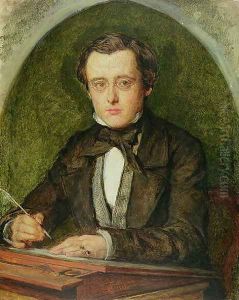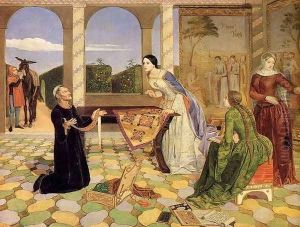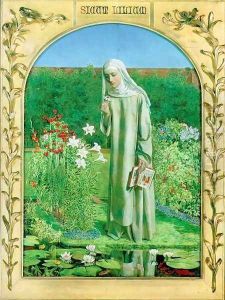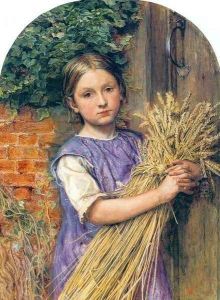Charles Allston Collins Paintings
Charles Allston Collins was a British painter and writer, born in 1828 in Hampstead, London. He was part of the Pre-Raphaelite Brotherhood, an influential group of artists and writers in the mid-19th century who sought to reform art by rejecting what they considered the mechanistic approach fostered by Mannerist artists after Raphael and Michelangelo. Collins was the younger son of landscape painter William Collins, which placed him in an artistic environment from an early age. His older brother, Wilkie Collins, would go on to become a well-known novelist and playwright, further embedding Charles within the creative and intellectual circles of his time.
Collins' early career was marked by his association with the Pre-Raphaelites, especially with John Everett Millais and Dante Gabriel Rossetti, although he was never formally a member of the Brotherhood. His adherence to the Pre-Raphaelite principles was evident in his meticulous attention to detail and his use of bright colors. One of his most notable works, 'Convent Thoughts' (1851), which depicts a nun in a garden, was praised for its detail and composition, embodying the Pre-Raphaelite ideal of combining moral and spiritual earnestness with meticulous observation of nature. Despite the initial success and promise shown in his paintings, Collins gradually shifted his focus from painting to writing.
As a writer, Collins produced several novels and short stories. His literary work, however, has not received the same level of recognition as his contributions to painting. Throughout his life, Collins struggled with health issues and was often overshadowed by the more dominant personalities within the Pre-Raphaelite circle and by the success of his brother, Wilkie.
Charles Allston Collins died in 1873 at the age of 45. Despite his relatively brief career and his later shift away from painting, his work remains a testament to the ideals of the Pre-Raphaelite movement, particularly their dedication to detail, color, and a deep engagement with nature. Today, Collins is remembered as a minor but significant figure in the history of British art, embodying the complex interrelations between the visual arts and literature in the 19th century.



